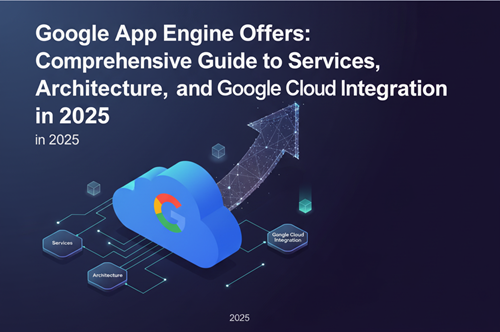Google App Engine Offers: Comprehensive Guide to Services, Architecture, and Google Cloud Integration in 2025
Google App Engine (GAE) continues to be a cornerstone Platform as a Service (PaaS) within the Google Cloud ecosystem, empowering developers and enterprises to build, deploy, and scale cloud-native applications efficiently without the burden of managing servers and infrastructure. As cloud computing evolves rapidly in 2025, a deep understanding of Google App Engine offers, its suite of services, underlying architecture, and its seamless integration with Google Cloud capabilities is essential.
This detailed article explores Google App Engine offers, elaborates on the services offered by Google App Engine, discusses its architecture, addresses the common misconception that “google’s app engine platform is iaas offering,” and highlights the synergy with Google APIs and free database services. It also contextualizes “the name of google cloud” and GAE’s integral role in modern cloud computing.
Google App Engine Offers: Flexible and Cost-Efficient in 2025
Google App Engine offers a variety of tiers and pricing options tailored to businesses of all sizes:
-
Always Free Tier: Includes 28 instance hours per day, 1 GB of outbound network egress monthly, 5 GB persistent storage, and limited Firestore/Datastore usage, ideal for lightweight apps and testing.
-
Pay-As-You-Go Pricing: Charges based on compute time, networking, and storage usage, offering scalability with cost management.
-
Trial Credits: New users can access $300 in Google Cloud credits valid for 90 days.
-
Discounts: Sustained use and committed use discount programs maximize cost savings for consistent workloads.
These competitive offers encourage innovation and smooth cloud adoption across startups and enterprises.
Services Offered by Google App Engine
Google App Engine delivers a comprehensive service ecosystem:
-
Managed Runtimes: Support for multiple popular languages such as Python, Java, Node.js, Go, PHP, Ruby, and .NET.
-
Flexible Environment: Allows custom runtimes within Docker containers for advanced application requirements.
-
Autoscaling & Load Balancing: Dynamically adjusts resources based on traffic and workload patterns.
-
Versioning & Traffic Splitting: Facilitates seamless application updates, canary releases, and A/B testing.
-
Background Task Processing: Task queues and cron jobs enable asynchronous operations and scheduled tasks.
-
Database Integration: Firestore, Cloud SQL, Cloud Storage, and Bigtable provide reliable data persistence.
-
Security & Compliance: Identity and Access Management (IAM), SSL, firewall controls, and encryption ensure robust protection.
-
Monitoring & Logging: Google Cloud Operations Suite provides deep observability and diagnostics.
Google App Engine Architecture
The architecture underpinning GAE supports scalability and resilience:
-
Stateless Containerized Instances: Applications run on isolated containers that Google manages and scales.
-
Global Load Balancing: Efficiently distributes requests to optimize latency and availability.
-
Managed Data Storage: Durable, highly available storage through Google Cloud’s database services.
-
Async Processing: Offloads heavy or time-consuming workloads to background task queues.
-
Health Monitoring: Continuous app and infrastructure health checks maintain high uptime.
This foundation liberates developers from infrastructure concerns, focusing instead on innovation.
Clarifying Misconceptions: Google App Engine Is Not IaaS
While Google Compute Engine provides Infrastructure as a Service by giving control over virtual machines, Google App Engine is Platform as a Service. GAE abstracts away server-level management, focusing on application code deployment, autoscaling, and maintenance.
Google API and Free Database Ecosystem
GAE applications can leverage a rich portfolio of Google APIs including Maps API, Vision API, Gemini AI API, and others for intelligent features. Furthermore, Google offers databases with free tiers such as Firestore and Cloud SQL, supporting developers with scalable, cost-effective backend infrastructures.
The Name of Google Cloud: Comprehensive Cloud Ecosystem
“Google Cloud” represents a robust and unified portfolio of services, including IaaS, PaaS, SaaS, AI, analytics, and security. Google App Engine is a prominent PaaS platform within this ecosystem, accelerating developer productivity and application scalability.
Business Benefits of Using Google App Engine in 2025
-
Rapid development and deployment.
-
Seamless scaling during traffic spikes.
-
Reduced operational overhead.
-
Enterprise-grade security integration.
-
Cost flexibility with pay-as-you-go pricing.
-
Rich API and data services ecosystem.
Conclusion
Google App Engine’s advanced offers, scalable services, and resilient architecture make it invaluable for creating cloud-native applications in 2025. Coupled with Google’s expansive API and free database integrations, GAE enables developers and businesses to innovate faster, reduce costs, and build reliable applications.
